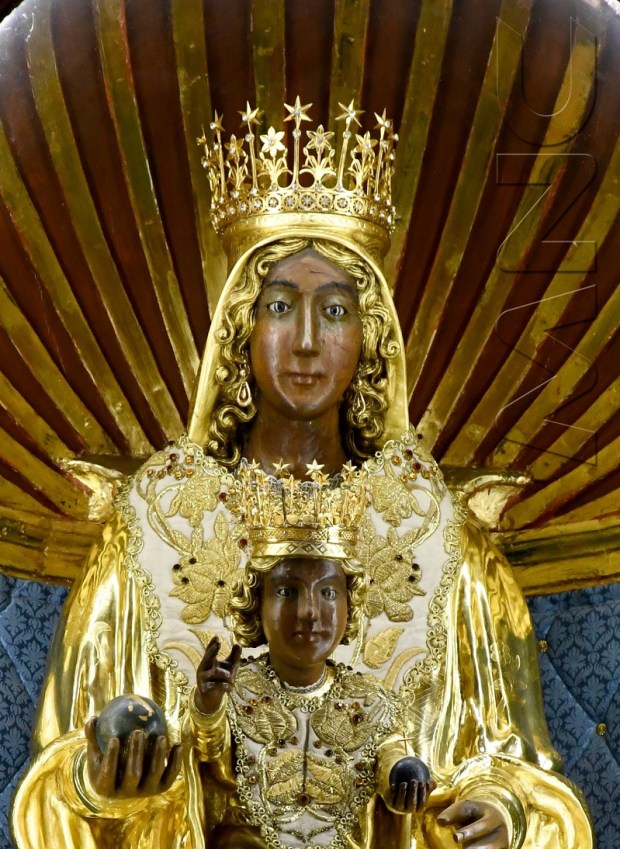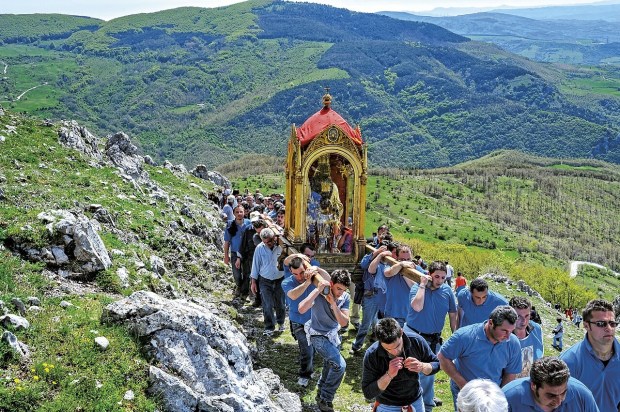From Poland’s Our Lady of Częstochowa to Catalunya’s Virgin of Montserrat, Europe hosts some of the world’s most famous “Black Madonnas,” statues or icons that depict the Virgin Mary with a dark complexion. Historians are not sure how these representations of the Virgin Mary came about, but what’s sure is that every Black Madonna shrine has a special meaning to people living in its immediate surroundings.
Unsurprisingly, Italy also counts a Black Madonna among its many Catholic landmarks. Nestled in the mountains that dominate the southern region of Basilicata, the town of Viggiano hosts the most important Black Marian shrine of Southern Italy. According to a local legend, the Virgin Mary appeared to a group of shepherds herding their sheep in Viggiano’s Sacred Mountain (Sacro Monte) in the 14th century.
When news of the miraculous apparition broke, locals alerted the local bishop who in turn alerted the pope, who ordered the location of the apparition to be inspected. The shepherds led a group of villagers back to the place of the apparition, where a wooden icon depicting the Black Madonna was found.
Made entirely out of wood and coated with golden leaves, this icon has been dated by art historians back to the year 500. Its composition resembles that of the Nikopoia, a Byzantine icon in which the Blessed Mother is depicted sitting on a throne while holding Baby Jesus on her lap. Both the Virgin Mary and Christ Child are depicted holding a globe in their hands, a unique detail that sets this icon apart from similar ones in the Byzantine world.

According to a local tradition, the wooden icon was taken down to the village after it was dug out of the earth, but soon disappeared, only to reappear a few days later in the same location on top of Viggiano’s Sacred Mountain. Since then, locals have recreated this miraculous event with a double procession taking place every year on the first Sunday of May and the first Sunday of September.
On the first Sunday of May, believers carry the 1,500-year-old icon from the mother church of Viggiano, where it is kept during winter, to the top of Monte Sacro. The icon is carried for about seven miles on the shoulders of a group of believers, while thousands of others follow close behind, accompanying the holy procession with songs, prayers, candles, and flowers.
The icon is then placed inside a small chapel on top of Monte Sacro, where it is kept for the duration of the summer. On the first Sunday of September, another heartfelt procession accompanies the icon back to Viggiano.

Locals have a very strong bond with the Black Madonna, which was officially proclaimed “Protector of Basilicata” by Pope John Paul II in 1991. They pray for her protection, and statues of the Black Madonna are found throughout Viggiano and nearby hamlets.

But the Black Madonna processions attract believers from other parts of Italy too. Despite the recent construction of a paved road connecting Viggiano with the top of Monte Sacro, most pilgrims choose to walk the traditional mountain trail traveled by the men who originally found the Black Madonna icon more than 500 years ago. Twice a year, the seven-mile trail, overlooking the green valley of Val d’Agri, becomes the setting of one of Southern Italy’s most heartfelt Catholic celebrations.
Catholics visiting during other times of the year can still walk up the steep path to glimpse at some of the atmosphere that makes this Marian shrine so special to locals. To visit Viggiano from Rome (242 miles), you can drive down the A1 highway until Caserta then take the E45, and after that follow signs for local roads to Viggiano.



